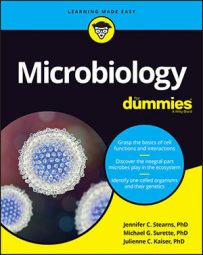Since the 19th century, there has been an explosion of great microbiological research, leading to many different branches of microbiology, all of which are both basic and applied in nature. Here’s a list of the different fields of microbiology that have developed since the discovery of microorganisms:
Aquatic, soil, and agricultural microbiology study the microorganisms associated with aquatic (including wastewater treatment systems), soil, and agricultural environments, respectively.
Bacteriology is the identification and characterization of bacterial species.
Immunology is the study of the body’s response to infection by microorganisms. Included within this field is the area of vaccine research, which aims to develop more and better ways of immunizing people from microorganisms that cause life-threatening infections.
Industrial microbiology applies the large-scale use of microorganisms to make things like antibiotics or alcohol.
Medical microbiology is the study of pathogenic microorganisms that cause infectious disease in humans and animals and ways to prevent and treat infections.
Microbial biochemistry aims to understand the enzymes and chemical reactions inside microbial cells.
Microbial biotechnology is genetically engineering microorganisms to produce a foreign gene or pathway so that it may either make a product for human use (for example, human insulin) or perform a function that we need (for example, degradation of environmental contaminants).
Microbial ecology is the study of microbial diversity in nature, as well as microbial populations and microbial communities and their effects on their environments. This includes nutrient cycling and biogeochemistry (biological, chemical, and physical processes that control the composition of the natural environment).
Microbial genetics is the study of the genomes of microorganisms, including how the genetic code varies between microbes and how genes are passed on.
Microbial systematics is the study of how microorganisms diversified through time. It includes the naming and organizing of microbial groups with respect to one another.
Mycology is the study of fungi, both in terms of their natural habitats and genetics, and in terms of their ability to cause disease in humans, other animals, and plants.
Parasitology is the study of parasites of animals and humans. These are all eukaryotic (not bacterial or archaeal) and include protists and worms.
Virology is the study of viruses and simple nonviral entities, such as viroids (RNA molecules that behave like infectious agents) and prions (proteins that behave like infectious agents).

